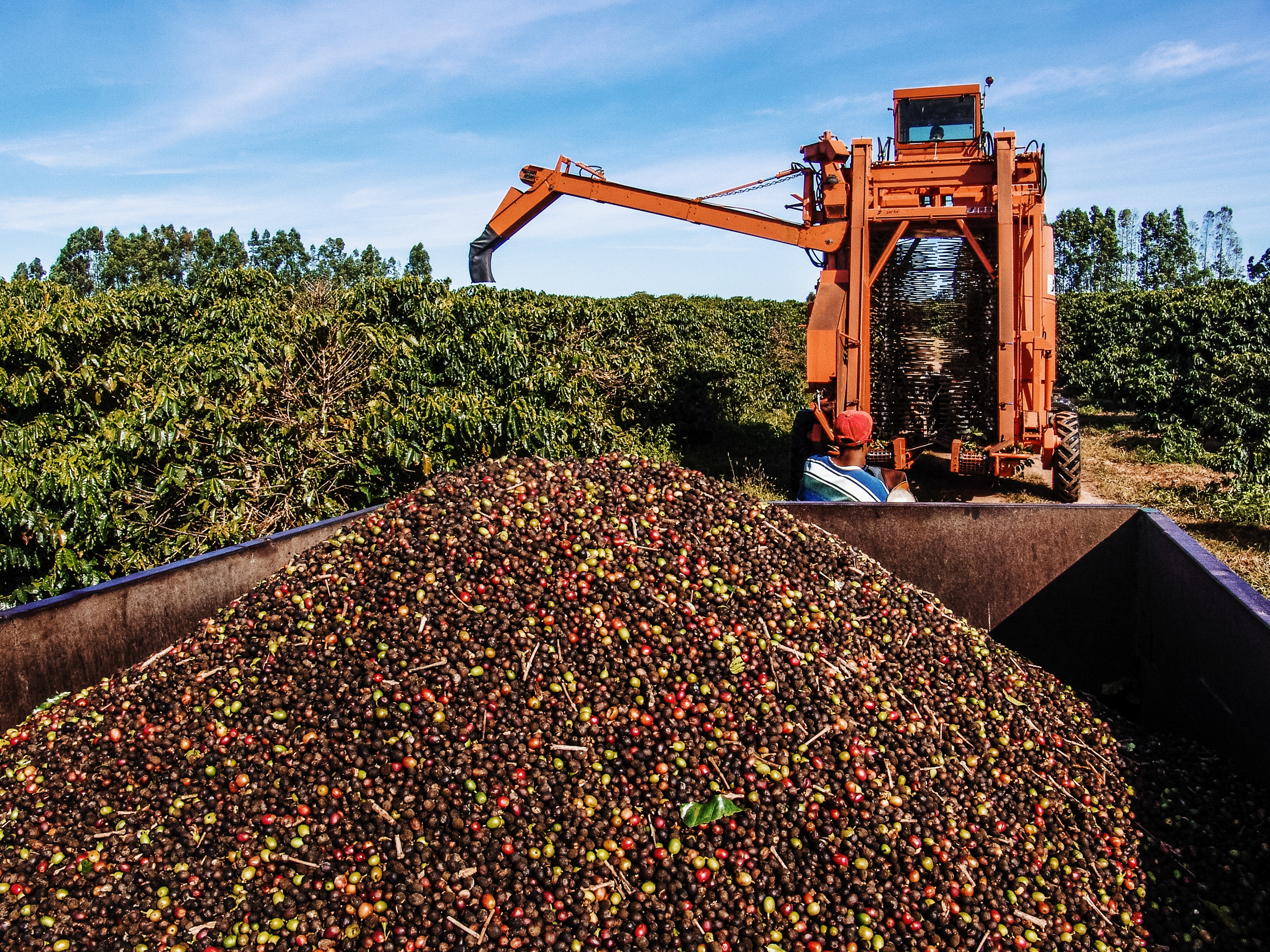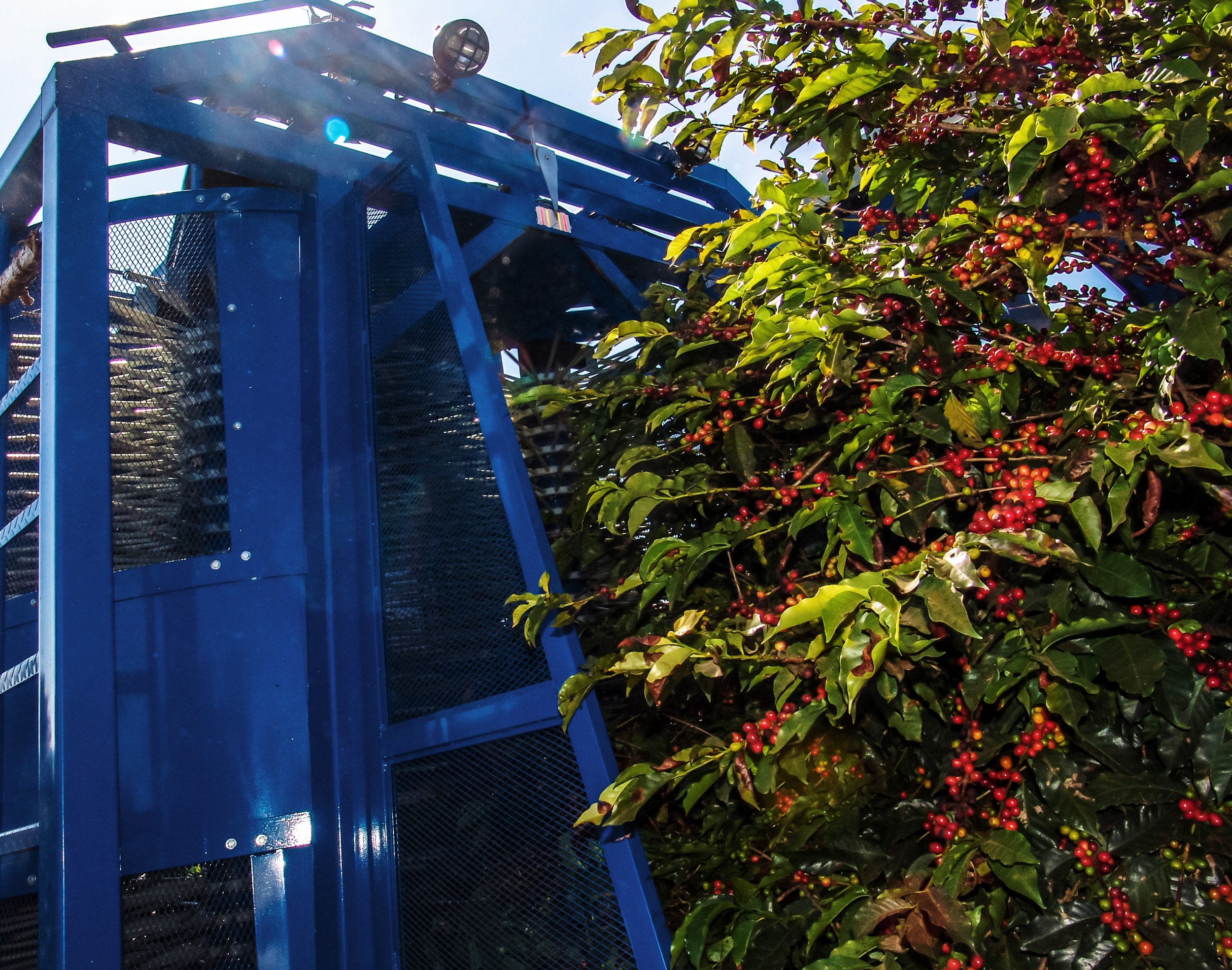Coffee in Brazil is mainly mechanically harvested أو strip-picked. In strip-picking, all the cherries, along with small leaves and twigs, are stripped off the branch by hand in a single movement. The high labour costs in Brazil compared with labour costs in other coffee-growing countries mean that selective hand-picking is rare. Instead, ripe, unripe, and overripe cherries are harvested together and then separated during processing.
 In both mechanical harvesting and strip-picking, unripe, ripe, and overripe cherries are harvested simultaneously
In both mechanical harvesting and strip-picking, unripe, ripe, and overripe cherries are harvested simultaneously
The history of the mechanical coffee harvester began in Brazil with a young Japanese mechanic named Shunji Nishimura. Nishimura emigrated to Brazil in 1932, lured by the Brazilian government’s settlement scheme that paid for his trip. He found work picking coffee on a farm in São Paulo and he also worked as a butler and a welder before finally setting up his own agricultural equipment business in the remote town of Pompéia (Jacto 2021). In 1979, Nishimura invented the first mechanical coffee harvester, an invention that would transform coffee farming in Brazil (Zaparolli 2018).
 A mechanical coffee harvester. The machine surrounds the row of coffee trees, and the impact from the rotating brushes on each side knocks cherries off the branches
A mechanical coffee harvester. The machine surrounds the row of coffee trees, and the impact from the rotating brushes on each side knocks cherries off the branches
Labour costs during harvesting can account for as much as half of the total cost of production, but mechanical harvesters reduce this cost by up to 62% (Oliveira et al 2007). Mechanical harvesting is thus a major contribution to the huge volume and low cost of coffee production in Brazil.
There are three main types of harvesters — large, self-propelled machines that completely surround the row of trees, smaller machines that can be mounted on the side of a tractor, and portable harvesters known as derriçadeiras. All three types work by beating or vibrating the branches, causing cherries to fall from the tree, where they can be collected,